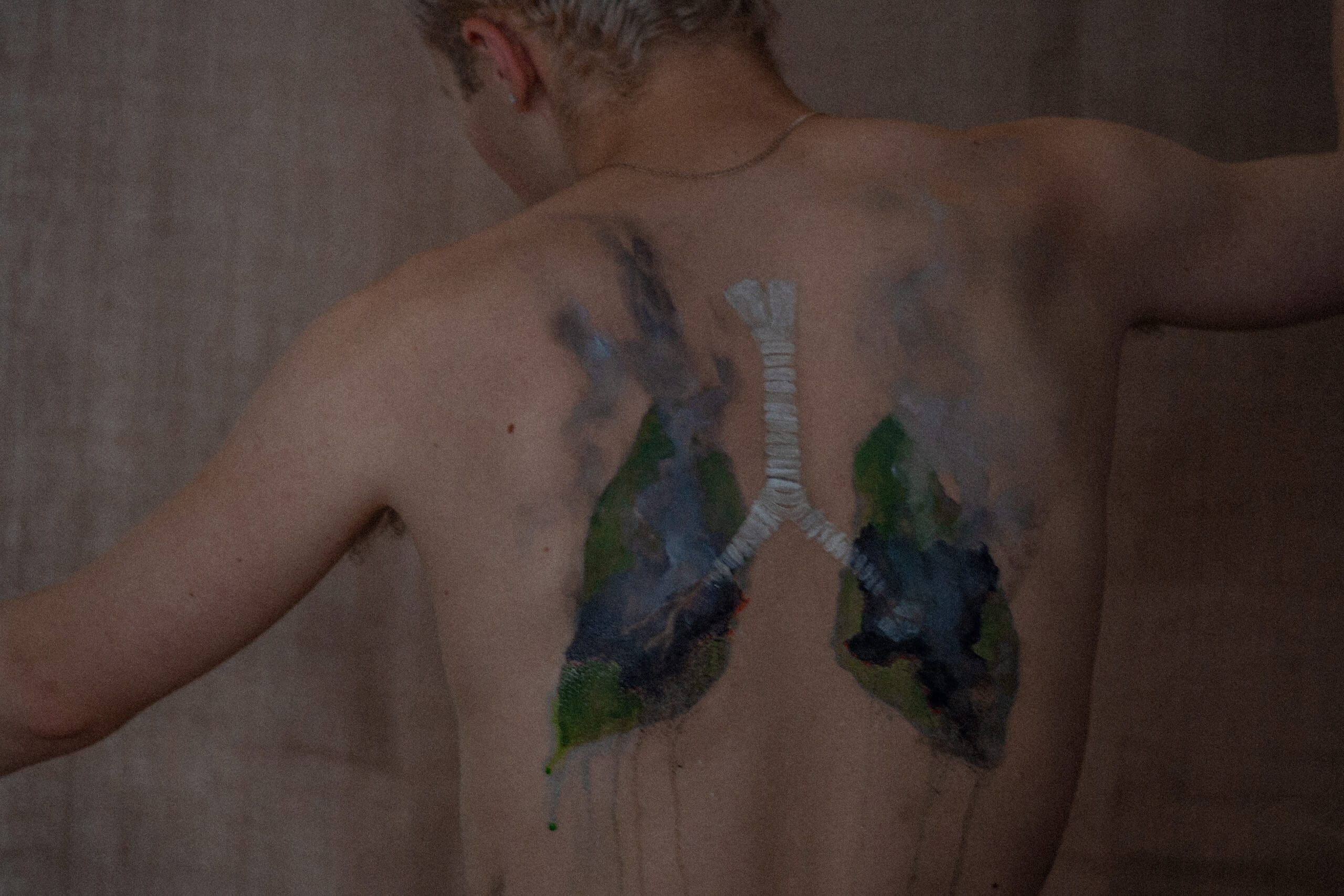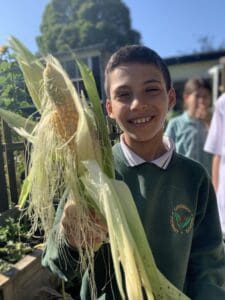With nearly a quarter of human-caused greenhouse gas emissions due to agriculture, forestry and other land use – making it the world’s second-largest contributor – a small school in inner-city London is showing the positive impact of changing your terrain…

In a corner of west London, a state primary school has planted a wheat “field”. It measures 4 x 6 metres, but in the context of a built-up capital city and the school’s Grade II* listed building, the term is relative and appropriate.
Greenside Primary in Shepherd’s Bush has been a pioneer in placing our planet at the centre of its curriculum since 2016, when it first changed its approach to school meals. In addition to lunches that are exclusively vegetarian and cooked on-site, the school remodelled its outdoor space into a Learning Garden: regenerative and rich in seasonal produce. “I’ve since discovered that when it was designed by architect Erno Goldfinger in the 1950s, the green space was intended to be a community garden,” says deputy headteacher Georgina Webber. “By accident, we have realised the original vision!”
Land, food and community
Now, the wheat field is further proof of the school’s ambition and part of what Georgina calls “breaducation”: to follow the bread-making process from start to finish in an inner-city context and, in doing so, understand the vital role that soil plays in safeguarding our planet.

Planting the field on a previously unused, street-side patch of grass became a community project. Parents volunteered; passers-by stopped to ask what was happening – and joined in. As well as the wheat field, Greenside acquired a bread oven and opened a micro bakery. Every Friday afternoon, a long queue snakes around the playground as the local community buys its weekly sourdough, focaccia and cinnamon buns.
Georgina recalls a Year 2 lesson, where they discussed the effects of conventional farming methods, notably the cumulative and circular impact of chemicals like nitrogen fertiliser on the land, food and planet as a whole. “I remember one boy’s response,” she says. “He said: we have to tell the Prime Minister and all the presidents about this! If they know, they’ll make it stop and everything will be fine, won’t it?”
Land-use change at scale
Agricultural land covers almost 40% of the Earth’s ice-free surface, with beef production the biggest driver of deforestation. The second is soy, largely grown to feed cows, chickens, pigs and farmed fish – and satisfy our privileged diets and appetites. Third and fourth on the production list are palm oil (for soaps and shampoos, chocolates and cookies, bread and margarine), and wood products (for our furniture). So the fact that Brazilian president Jair Bolsonaro is trying to legalise land grabs in the Amazon rainforest and open it up to logging, mining and cattle ranching affects every one of us.
The Amazon is our planet’s largest land-based carbon store. It is also home to around 900,000 Indigenous people, whose lives are increasingly under threat from land-use change. Indigenous lands across the world contain about 80% of the planet’s biodiversity, which supports all life on Earth. While lining their pockets, Bolsonaro and co are simultaneously depleting wealth for everyone else, by accelerating climate change and biodiversity loss, and therefore compromising our future.


At a United Nations General Assembly meeting in 2021, delegates were told that land is at the centre of a triple planetary crises of climate change, biodiversity loss and population. Two scenarios were discussed – a worst- and best-case – depending on the degree of change to land-use policies. Crucially, the latter is not a “utopian” scenario, according to executive secretary Ibrahim Thiaw, but very much within our reach. “But it takes determination among the world’s leaders to do so.”
Back in Shepherd’s Bush, I ask headteacher Robin Yeats what he sees as the biggest value of his school’s pioneering approach. His reply filled me with hope, anger and responsibility. “If we can show the children that they can make a difference in our little garden, they will realise what they can do on a bigger scale.”
If we can show the children that they can make a difference in our little garden, they will realise what they can do on a bigger scale.
What impact can you make?
Greenside Primary has shown the impact of community action, that anyone can make a change right on their doorstep. As citizens and consumers, we can ensure that the products we buy and decisions we make help to safeguard – rather than deplete – our Planet’s finite resources.
For larger-scale change, you could engage with the work of Greenpeace, by donating to its fight to protect the Amazon or following its “Ways To Get Involved”, from volunteering to signing petitions – scroll to the bottom of this page. Or support Amazon Watch and the Indigenous Communities fighting to save the rainforest to avoid climate and biodiversity collapse.
If you want to get your hands ‘dirty’, you could also get involved in your local community garden or allotment. And if you don’t have such initiatives nearby, why not petition your local council to turn disused urban areas into thriving gardens?